“Dislocation can do the job of analysis [Le dépaysement fait office d’analyse]. Being a white man among the blacks is like being an analyst among the whites.” ~ Octave Mannoni
“Guilt feelings may be considered a subtle form of death. Time passes by slowly, tearing us to pieces. We foresee a sentence already written out and unalterable. The event is unredeemable, almost like an ancient and cursed action.” ~ Giancarlo Signorini
The role that aesthetics plays in the overall cultural drama of society is complex. Aesthetics affect everything and are often overlooked completely. I have been struck recently with how pervasive are the effects on a society without any real aesthetic comprehension, without even basic aesthetic judgements.
The political propaganda that the U.S. churns out on a daily basis is covered by a number of very good writers. But relatively few people read such writers. Less covered is how people have come to navigate daily life in matters that seem not to be political. One obvious example is how people eat today. And not just in the U.S. or even western Europe, but everywhere. Globally.
“What else is in your basket? Suppose you are eyeing up a pot of something temptingly called a “chocolate cream dessert”. You read the ingredients: whole milk, sugar (well, there had to be some), cream, cocoa powder and dark chocolate.
It all sounds quite upmarket, but then your urge to buy falters as you notice three feel-bad ingredients. This is the domain of people whose natural environment is the laboratory, not the kitchen; people who share the assumption that everything nature can do, man can do so much better and more profitably.
The first is carrageenan (E407), a setting agent derived from seaweed that has been linked with ulcers and gastrointestinal cancer. It is now regarded in food industry circles as an “ideally not” (to be included) additive.
The second of these worrying ingredients is a modified starch (E1422), or to give it its full chemical name, acetylated distarch adipate. It started off as a simple starch, but has been chemically altered to increase its water-holding capacity and tolerance for the extreme temperatures and physical pressures of industrial-scale processing.
The third problematic ingredient is gelatine. This is anathema to observant Muslims, Jews and vegetarians, and even secular omnivores may be wondering what this by-product of pig skin is doing in their pudding.
Fortunately for the manufacturers of your chocolate cream dessert, there is a Plan B. They can remove all three offending items, and replace them with a more sophisticated type of “functional flour”, hydrothermally extracted from cereals, that will do the same job, but without the need for E numbers.
Another possibility for cleaning up this dessert would be to use a “co-texturiser”, something that would cost-effectively deliver the necessary thick and creamy indulgence factor. Texturisers, just like modified starches, are based on highly processed, altered starch designed to withstand high-pressure manufacturing – but because they are obligingly classified by food regulators as a “functional native starch”, they can be labelled simply as “starch”.
Again, no E numbers. So, out come two additives and one ingredient that many people avoid, to be replaced by a single new-generation ingredient, one that is opaque in its formulation (proprietary secrets and all that) but which won’t trigger consumer alarm.” ~ Joanna Blythman (The Guardian)
Colin Todhunter recently wrote:
“We often hear unsubstantiated claims about the green revolution having saved hundreds of millions of lives, but any short-term gains have been offset. This high-input petro-chemical paradigm helped the drive towards greater monocropping and has resulted in less diverse diets and less nutritious foods. Its long-term impact has led to soil degradation and mineral imbalances, which in turn have adversely affected human health.”
So in one way, the corporate domination of life is not just represented by the electoral circus of Hillary and Trump, or the countless other national electoral spectacles, but by altering how people eat and think about housing and learning, about their goals and desires.
And that is all intertwined with aesthetics. For the selling of foods (to continue with that example) is a multi billion dollar a year business. Packaging is the third biggest industry in the world after war and prostitution (including porn).
That says a lot about the state of human consciousness right now.

Tereza Zelenkova, photography.
“There are currently 34,000 pesticides registered for use in the US. Drinking water is often contaminated by pesticides and more babies are being born with preventable birth defects due to pesticide exposure.
Illnesses are on the rise too, including asthma, autism and learning disabilities, birth defects and reproductive dysfunction, diabetes, Parkinson’s and Alzheimer’s diseases and several types of cancer. The association with pesticide exposure is becoming stronger with each new study.” ~ Colin Todhunter
I went into a supermarket in Norway when I first got here and saw that individual parsnips were wrapped in shrinkwrap plastic. The absurdity of this is clear, and yet this is Norway, allegedly one of the more progressive countries in the world. And in many ways it is, but in the matter of food it is not. In what universe does it make sense to wrap each vegetable in pliable plastic known to cause countless health problems?
http://discovermagazine.com/2008/may/18-the-dirty-truth-about-plastic/
So, there are countless sources of information on all this. And yet, people rarely object. How does that happen? This may seem slightly surreal, plastic wrapped tomatoes and now, recently, plastic wrapped pre-peeled bananas, but it is not insignificant.
And it is within this surreality that I think one can examine aesthetic issues. It is clear that the real benchmark issue is a system based on profit, Capitalism.
Full stop. Capitalism has as its single goal to maximize profit. That’s all. And again there is a huge library available to analyze this. It creates inequality and poverty, and it reinforces a jingoistic belief in the need for war, which in fact the ruling class DOES need. All of this is clear. And yet, there remain questions about awareness that are less clear. For that is partly what culture provides, historically, for a society. A way to learn to see and to hear. It is, possibly, what religion once, far far back, provided. Perhaps.
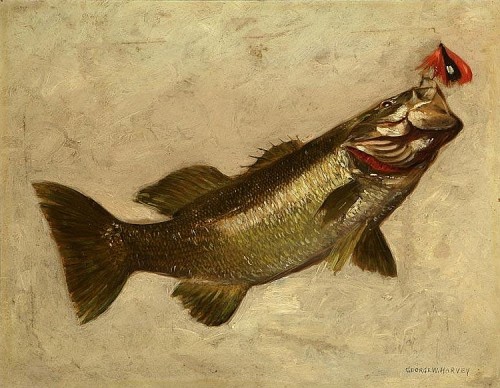
George Harvey
So in a sense, the acceptance of shrink wrapped cucumbers is directly related to an acceptance of NATO bombing Libya.
Or an acceptance of a militarized police and national surveillance state. Now, the role of ideology enters this discussion at its foundation. Writing about Nuclear proliferation, and not cucumbers, Hugh Gusterson makes a very important observation:
“In the process of producing the Third World, we also produce ourselves, for the Orient, one of the West’s “deepest and most recurring images of the other,” is essential in defining the West “as its contrasting image, idea, personality, experience” (Said). The particular images and metaphors that recur in the discourse on proliferation represent Third World nations as criminals, women, and children. But these recurrent images and metaphors, all of which pertain in some way to dis-order, can also be read as telling hints about the facets of our own psychology and culture which we find especially troubling in regard to our custodianship over nuclear weapons.”
The metaphors and images are part of the ideological armor the West wears in the nuclear age, but they are also clues that suggest buried, denied, and troubling parts of ourselves that have mysteriously surfaced in our distorted representations of the Other. As Akhil Gupta has argued in his analysis of a different orientalist discourse, the discourse on development, “within development discourse . . . lies its shadowy double . . . a virtual presence, inappropriate objects that serve to open up the ‘developed world’ itself as an inappropriate object”.
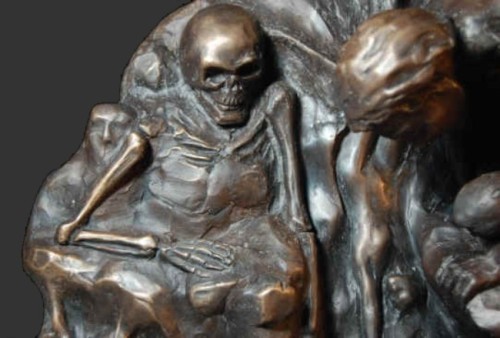
August Rodin [detail from The Gates of Hell]
*Sick building syndrome* is a rather perfect allegory for the loss of awareness under Capitalism. SBS is a somewhat broad label that covers a variety of, usually, respiratory conditions and allegeries associated with time spent in a specific building.
Nearly all SBS cases involve buildings that lack windows that open and additionally have badly maintained ventilation systems. However, very quickly the wagons were circled and various studies concluded that SBS lacked scientific rigour as a clinical term, and hence was abandoned by both courts and doctors.
There are literally hundreds of conditions associated with bad ventilation, from skin rashes to fatigue to somatization disorder, which is itself a kind of allegory within an allegory. For all of this is indeed very vague. But before I continue…think about buildings with windows that don’t open. What society builds such buildings?
Well….one part of one answer is this….http://www.dailymail.co.uk/news/article-3348096/New-schools-homes-Britain-windows-won-t-open-fresh-air-polluted.html

David Ledger
But really, as in all things under Capitalism, cost is the main feature. Michael Stych writes:
“The reason for the rise of sealed windows and mechanical ventilation was commercial: combined with artificial light, it allows buildings to be much deeper in plan. Removing interior courtyards and light-wells frees up space that can become part of a building’s floor plans.”
But the point is that buildings with sealed windows disconnect the people inside from the world outside. Its a metaphor, and additionally, that disconnect subjugates the people inside in the sense that they are dependent on a certain system of air conditioning and lighting.
And then we could talk about fluorescent lighting, which is found in the vast vast majority of commercial buildings and schools in the Western world.
Again, fluorescent lighting is cheap. LEDs are better, and HIDs better yet, but both are more expensive. Fluorescent lights flicker, especially when they age. That flickering has been linked to migraines, anxiety, sexual dysfunction, endocrine disruption, and depression.
As a side bar, I cannot work in rooms with fluorescent lighting. I used to have students at the film school brings candles for their desks. But I digress. But looking at that roll call of health issues, their is a curious vagueness to all of it. Depression is a pretty fluid concept, as is anxiety. And all of them overlap with each other. The overriding reality is that cheap fluorescent lighting is bad for you. But it IS cheap.
Dr. Helen Walls writes:
“The sensitivity of the eye to short electromagnetic wavelengths not perceived as visible light is important. Absorption of too much short-wavelength UV light can damage ocular tissues by changing the chemical structure of biomolecules.13 UV wavelengths less than 500 nanometers (and certainly less than 380 nm) are capable of irreparable damage to the eye.”
So there is that as well, extended exposure to CFLs is known to cause erosion of eyesight. And yet, 90% of commercial buildings in the U.S. (and UK and Germany) use fluorescent lighting.
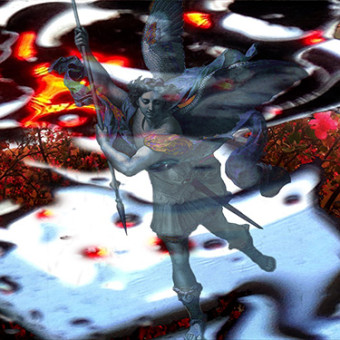
Michael Scott
There is an aesthetic dimension to this, in a sort of pedestrian sense; CFLs produce an ugly light that makes rooms appear drab, muted and slightly sickly looking. And yet the idea of ‘light’ being important for aesthetic reasons is laughed at for the most part. As if workers needed an appealing room to work in. Bunch of sissies.
The prison block is the template for contemporary existence. Schools, factories, hospitals and offices — all are modeled on prisons.
Still, what I’m really trying to get at in this is that an inability to create narratives of our own lives, let alone the lives of others, is going to eventually result (if it hasn’t really already) in a society of psychologically deformed people.
A society that only expresses base repetitions and primitive one dimensional semi-narratives, with rudimentary metaphors and no allegories, is one that is expressing a collective death wish. Except perhaps there are some narcissistic allegories, or rather, allegories of narcissism. But I want to return to that Gusterson quote. There is a dialectical relationship between the production of self and of other. One is always projecting.
“(Beliefs about race) when they are suffused with intense feeling, are akin to psychotic states of mind… The mechanisms of psychotic thought find in racial categorizations an ideal container. These mechanisms include the paranoid splitting of objects into the loved and hated, the suffusion of thinking processes by intense, unrecognized emotion, confusion between self
and object due to the splitting of the self and massive projective identification, and hatred of reality and truth.” ~ Michael Rustin
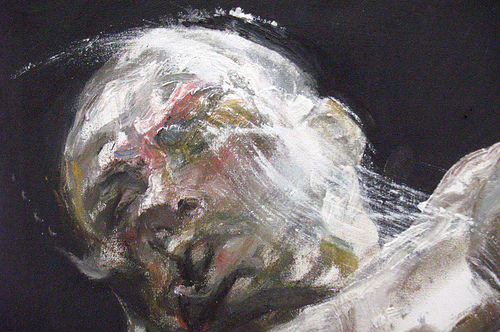
Sam Dillmans
Rustin also discusses the paranoia present in most racist thinking. A fear of airborne diseases associated with immigrant hordes, or poisoned immigrant food, etc. Always a threat from outside, like martian invaders.
And this is reminiscent of Klaus Theweleit’s writings on the German Freikorps. But a contemporary society that IS manufacturing diseased air, in closed buildings that erode health, is one that finds expression for that self loathing in a fear of the outside and the ‘other’.
“…the point about projection is that it reveals precisely the permeability of subject boundaries: what is supposedly ‘inside’ does not stay there, but leaks out and finds its place amongst networks of identification and relationality that are organised socially. These are also part of the ‘self’: racist ideation is intense precisely because it is felt. The meaning of a ‘social subject’ is located here: each subject is constructed in and by the demands of (colonial) society, of course acting upon it in its own way, but nevertheless riven by it and inconceivable without it.” ~ Stephen Frosh
In a sense the rise of Capitalism coerced the internalizing of a certain very narrow idea of the self. One that was hyper rational, and more importantly, unified. The modern individual, the consumer capitalist. Or as Frosh puts it:
“Western modernity is built on the renunciation of alternative possibilities of being; the drive for profit swamps the impulses for pleasure and enjoyment.”
This formation necessitated a rejection of different kinds of selfness, and additionally, a need to see one’s own fears and inadequacies directed outward. The entire colonial construct operates this way. The colonizer is superior because he or she is rational, rejecting of superstition (sic) and along with this superiority is a sense of being goal directed. In other words *one* narrative came to dominate and describe a picture of the world. But that which is left out of this narrative, of course, returns in fantastical form.
The savage and uncontrollable *other*. The third world itself is the psychological repository for all that has been repressed in the Western psyche.

Josephine Baker
Remember, too, that the colonized are always viewed as potentially uncontrollable, that greatest of sins. The early Capitalist order was Puritan, as well, and this renunciation is the bedrock of western culture today, still. The prevailing single narrative of bourgeoise culture is one built on justifying slavery and colonialism, and by extension violence and murder.
Watching the recent TV series on the O.J. Simpson trial reminded me of the curious case of Mark Furman — the racist cop who became the center of attention during the trial. Furman, an avowed neo nazi white supremacist was also recently employed by FOX news.
In Israel this week crowds cheered the IDF soldier who executed a defenseless Palestinian man who was laying on the ground. This is the haunted toxic self of the West, the ‘Indian killer’ and American Sniper.
These are the congealed mini narratives of the West. And there is an enormous amount of desire for that which is stigmatized and rejected. The over sexualized body of the colonized, the imagined sense of freedom and license attributed to the slave or colonized is irrational, but an example of private fantasy narratives.
One must both kill and fuck the object of rejection who is also an object of great seduction. The cliched but true image of London bankers paying to be spanked or dressed up in diapers is sort of speaking to this. The fantasy narratives of the bourgeoisie are always partly about the anxiety of what has been forgotten, or believed to be forgotten. Something lost, and in more extreme cases, stolen. Somehow the subjugated are never subjugated enough. THEY must be to blame. WE cannot regress enough.
The Orientalism of mainstream media is acute. The third world is home to strange cunning evil masterminds, at the same time it is seen as primitive and backward. Those evil masterminds that crop up constantly in Hollywood film and TV are viewed with both hatred and a strange feeling of desire — for they are like Milton’s devil, a lot more interesting than the button downed FBI agent God.
Which is why the trope of rogue cop is so popular, for the man of the system who goes *outside* the system, goes outside into the land of the other. This was Walter White, of course, the 21st century Ramar of the Jungle. But it’s Dirty Harry, too, and even to some degree Batman. But the Batman version is less satisfactory because the costumed crime fighter is hermetically distanced from the *jungle*. Batman is just never as sexy as Dirty Harry. There is such acute ambivalence at the core of all these kitsch narratives of white superiority, and there is such guilt.
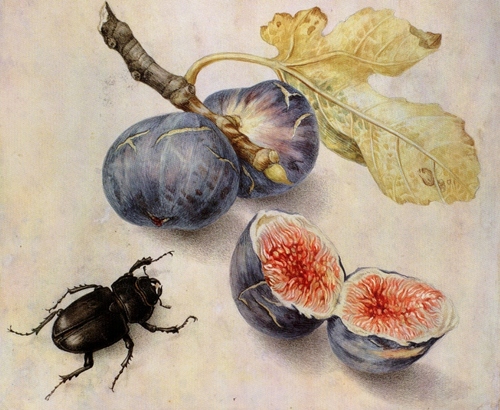
Giovanna Garzoni
There is no reliable vantage point for the spatial metaphors in all this. The therapist or psychoanalyst in the U.S. is colonized by the very institution to which he must belong, or at least by those to whom he or she pays rent for the offices in use.
There is a metaphor, too, in the loss of diversity in food. Where once there twenty varities of carrots, and dozens of apples, today there are maybe two or three of each.
That loss of diversity is reflected in the loss of diversity in narrative, and in how narrative is applied to interpretation. Mass culture today is stunningly repetitive. Formulaic. And running alongside this shrinkage of story is the promotion of *choice*.
Free market Capitalism is promoted as the last bastion of free choice. I have a hundred kinds of toothbrush to choose from. All identical. Every single Hollywood summer blockbuster is nearly identical to every other summer blockbuster. Each TV cop show or medical show is identical to the previous one. But the focus becomes on ‘choosing’, not on what is chosen. Not even on what is available to be chosen — only the individuality of choice.
The guilt of the subjugator runs through Western capitalist society today, and has from its inception. But the evolution of guilt became more a search for self punishment to armor the self against guilt.
“Unconscious self-punitive activity is narcissistic. Authentic guilt moves beyond narcissism toward object love” ~ Donald Carvath
The erosion of compassion, and concern for others, the ability to imagine consequences for others has meant that a super ego judgement has disconnected to some degree from a recognizable *feeling* of guilt. Knowing there is a judgement passed but not feeling it. Carvath quotes Erik Erickson:
“The patient of today suffers most under the problem of what he should believe in and who he should–or, indeed, might–be or become; while the patient of early psychoanalysis suffered most under inhibitions which prevented him from being what and who he thought he knew he was”.
This has only intensified, I think. Marcuse said much the same thing, and it speaks to the prominence of goal orientation as an ideal, but also the ambivalence associated with it. For the elevation of this idea of the individual is so illusory and fraudulent that only with great effort is the facade kept in place.
The audience for the self has largely evaporated. The object of concern is disembodied, fragmented, and with so much attention to a fragile sense of self, the idea of the judgement others may have passed on us has retreated. In other words, the judgement of others is less and less considered, except in hyper superficial ways.
Or increasingly, anonymously, or pseudo anonymously. Evelyne Pewzner (another author mostly untranslated into English) sites obsessive neurosis about dirt, about bodily contamination and then leading to worries about moral contamination as the most common psychological malady in Western societies, and right alongside a relentless self accusation and search for punishment.
A punishment for a repressed crime of aggression. A crime unknown to the conscious mind — in other words. But today, I think the feeling is even less precise. The judgement of super ego is itself vague and undefined — as if we have moved from Dostoyevksy to Kafka.

Sybille Bergemann Photography
Giancarlo Signorini notes that there is no guilt in African or Eastern cultures. Guilt is Judaic and Christian. In Japan, though, there are complex versions of paranoia that are linked to shame. But Signorini points out that guilt for Judaic culture was disobeying the father, or brother.
In Christian culture the guilt was sexualized. Original sin, though, is Hebrew in origin. In African societies, pre industrial, paranoia stood in place of melancholia and guilt. And the responsibility of the one who identified the threat, which was outside and not in the person, carried a tremendous weight and worry.
That is not depression, but something more like schizophrenia. In the contemporary West the sense of guilt has two branches, I think. One is a false guilt. A pseudo concern for someone else that you pretend to care about. Oh Bobby’s really sad and I feel guilty. Usually, no you don’t, because you don’t give a shit about Bobby, but you do feel unease at Bobby’s expression of sadness and your proximity to it.
The more intimate the relationship to Bobby, the more expressive the guilty party. But this is not guilt, it is not linked to anything like original sin, and neither is it sincere. But the question of sincerity is, of course, highly contested. I think today there is also a hyper superficial shame that one hears about all the time. I’m ashamed I didn’t do this or that. This is performative shame.
Real shame is silent and without expression. Pseudo shame is a performance of embarrassment.
And indeed shame and embarrassment are now very close. One morphs into the other and back again. But also, when the viewer *sees* suffering, the sympathy felt is really just replacing the sufferer’s pain — or, rather, appropriating it.
This is a western white phenomenon, I think. I see therefore I feel sympathy (pity). But the *seeing* part implies, often, mastery of the view. But I will return to this at the bottom.

Auguste Rodin [detail from John the Baptist]
In Kafka’s The Penal Colony, the hidden motive for the crime is only clear after the punishment. And indeed, both Genet and Dostoyevsky saw criminals are sacrificial redeemers, and this is partly how Rene Girard sees the anthropology of western society.
And there are countless cases of crimes being committed to relieve the anxiety and pressure of unresolved guilt. And in fact, one can hear the echoes of old Testament stories in this, in Job for certain.
But today, under advanced capitalism, and in a society now isolated in screen dreams and indoctrinated 24 hours a day by mainstream media, there are new questions having to do with original guilt, or, as Herman Westerink writes (quoting Ernest Jones}:
“The child feels guilty because of its aggression. Only in the second stage of development is this sense of guilt linked to real, prohibiting parents. Isaacs’ conclusion is that the sense of guilt is unavoidable because it stems from “developmental processes in the child” and thus not “from accidental circumstances or faulty education”.
In other words the child learns guilt. In its pre moral stage it is just a form of frustration and aggression. And sadism born of privation. The loosening of parental authority in the second half of the 20th century has led to a new hyper ruthless super-ego, one bent on a distilled pure sadism, not on moral parameters.
But there is an aesthetic aspect here, to return to the original point. Freud always related the Oedipal narrative as importantly *narrative*, and the late Freud of Moses and Monotheism is one reflecting on the mythologies of antiquity, of his identity as Jew.
“Tragedies had always been important (Oedipus, Hamlet, Faust), and now Freud’s own history had also become tragic, a tale of a sense of guilt that determined the character of an entire people and its fate throughout history, including a threatening future in Nazi Germany. Seen in this light, there are certainly arguments to support the following hypothesis – Freud also identified with his oldest hero, Goethe, and Moses and Monotheism was his Faustian novel.” ~ Herman Westerink

Leonce Raphael Agbodjelou Photography [Benin, 1960s]
The loss of judgement is also the loss of an audience to judge oneself. The audience seeking or expecting entertainment is reflected or mirrored in an interior entertainment.
The subject’s anxiety is increasingly about who to be, and that is homogenous and without difference. The story narrated to the self is one of individuality but an individuality without difference. The individual of entertainment, not tragedy.
If tragedy is a kind of revealing, then entertainment is a kind of burial. A covering over. A compulsive repetitive recreation of appeasement to the super ego. The narrative is one of appeasement to the sense of failure to be something individual.
Aesthetic experience is halted by an onslaught of marketed image, kitsch products and narrative, and by propaganda. To the point where the irrational is unseen, where buildings without windows are accepted, plastic wrapped food, and then where mass militarism is applauded in an identical way to The Hunger Games.
Fantasy is disenchantment, and throughout the constant anxiety and guilt of misperceived ideas of the self are repeated at ever accelerated rates. The expectation is for imagination, but such films provide only deep lacerating disappointment.
Living with a constant need to convince yourself you are having fun is deeply spiritually numbing. More people know who Claire Underwood is than who is poet laureate…and of course whoever is poet laureate is hardly worth knowing anyway.
Kafka is a face on a t-shirt and an inability to process the lies of state trickle down to an inability to remove the ugliness and dangers of poor lighting and ventilation.
The most popular sport in America is proven to cause irreparable brain damage. These substitute gratifications are empty and hence must be repeated. The violence directed at the poor is ignored in exactly the same way that sporting brain damage is ignored. And then these things blur into each other.
Even as people lose their houses they will echo jingoistic mantras in support of the very people stealing their homes and even if they know this, even if they can actually articulate that banks and politicians are untrustworthy, they applaud and parrot the slogans all the same. For they feel they are guilty of something, deserving of their own failure. And even when they are not, they are paralyzed with anxiety.
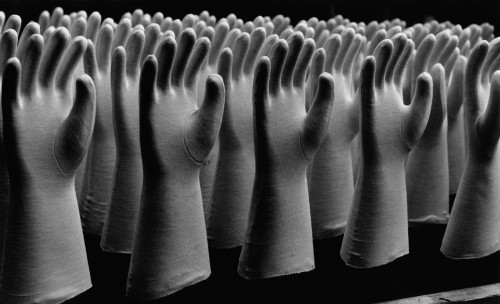
Wolfgang Suschitzky Photography
The narrative attached to the release of the Panama Papers reads like an episode of House of Cards. Christopher Black wrote:
“You have to love the chutzpah of CNN and Christiane Amanpour as she interviews a spokesman for the ICIJ that “leaked” the Panama docs and pretends to be independent and unaware of the what is happening when she is a member of the Board of Advisors of the Centre For Public Policy that created the ICIJ. Does she ever mention this to the viewer? Of course not, she just carries out the charade.”
Indeed, this is the classic Nixon strategy of a limited hang-out. Kit, over at the Off Guardian wrote:
“The Panama Papers broke, yesterday. Dozens of MSM outlets joined together in echoing this startling piece of investigative journalism: Rich people avoid paying their taxes. I know, I was shocked too. Most of the BIG HEADLINES and threatening looking diagrams were reserved for Vladimir Putin (The Guardian) and Bashar al-Assad (The Independent), despite the fact that (as we covered last night) neither are named in any of the leaked documents.
The names that ARE mentioned? A who’s who of disposable despots, monsters of the week and inconveniently uncooperative politicians…with a few minor British political figures to add some verisimilitude. No American companies were implicated….No American citizens were named…
The cooperative of intelligence-backed hacks who “broke” this “story” all hail from The International Consortium of Investigative Journalists (ICIJ) a “special project” (their website tells us) of the not-at-all-Orwellian-sounding “Center for Public Integrity”.

Horst Ademeit
The people backing this bit of journalistic propaganda…The Rockefeller Foundation and Rockefeller Brothers Fund, Soros’ Open Society, the Ford Foundation, and the Carnegie Corporation. Exactly how much imagination is required to correctly decipher this?
But the narratives of the mainstream media are ones that deny second levels of meaning. I wrote last posting about the loss of allegory. The fact that Amanpour is married to Jamie Ruben, who was Bill Clinton’s errand boy during the NATO bombing of civilian Belgrade, is barely known.
The issue of class is intentionally obscured. Trump reminds me a bit of Rick Perry in the sense that he is of a second tier *class*. He went to Fordham, not Harvard or Yale. Perry went to Texas A&M for christ sake. Trump has bought his way into national life through his inherited slum lord father’s money. Hillary is invited in, she is born to the inside. Hillary is Wellesley and Yale.
Class is a narrative that is always removed in the stories and public myths of the U.S. The manufacturing of nostalgia for rugged frontiersmen or military heroes (Andrew Jackson, say, or James Garfield, the latter is perhaps the last working class President, and possibly the ONLY working class president. Of course he was shot.)
Looking at cabinet positions, from 1897 to 1973, close to 70% of cabinet positions were held by those from elite families of wealth. Over 90% of cabinet positions were filled by people formerly working as corporate officers. Something like 75% of those in executive, legislative and judicial positions have come from elite private universities and almost all have advanced degrees from elite northeastern colleges.
Charles E. Hurst has written that the working class is excluded from positions of decision making…but he also said it was difficult to conceptualize the issues of power. The presidents of universities are overwhelmingly from rich families and over 90% are men (except at junior colleges where 49% of presidents are women…speaking of gender inequality). The ruling class sees it as their duty to discipline the underclass, much as those colonial magistrates saw the need to discipline the natives.
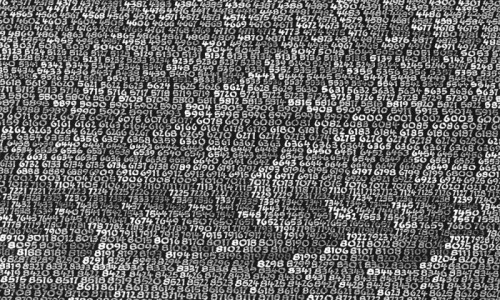
Roman Opalka
In higher education it is worth noting the trend for Universities to hire Presidents with business backgrounds, not academic. Tim Wolfe at U. of Missouri, and former oil exec Bruce Benson at Colorado University, or former Admiral Bill McRaven now is chancellor of the University of Texas system.
The point is that schools are now run like corporations, much as museums are and theatres and most everything else. And white men still are the shot callers. But there is not narrative at hand for this class bias. One has to stitch together disparate facts and conceptualize the linkage.
The master narratives still in play in the U.S. are mostly warmed over 1950s nostalgia. It is Leave it to Beaver (where amusingly the dad, Ward Cleaver, was only known to work at “a big company” in New York) or Father Knows Best — where the grey flannel suited white men are the image and personification of probity and dependability. The inherited myths of advanced Capital, at least in the U.S., remain starkly white and racist and misogynist.

Giulio Turcato
A world of reality TV and game shows, of talking heads and celebrities with wealth is now an empty loop of streamed image that people feel helpless to stop. The absolute absence of history has been achieved. Giant telecoms control what is seen and heard. And everyone is chained to repetitive and mind numbing bureaucratic chores that nickel and dime them to death.
Mass produced food has resulted in unimaginable spikes in obesity and all the attendant health problems that come with that. Cities are congested and loud and impossible to navigate. Suburbs are barren ugly isolated and lonely. And rural communities are stark and impoverished.
No dignity is allowed.
And the people, the corporations, such as Monsanto, that work to profit from the crisis of bee death cannot possibly be immune to their own self hatred. For profit is in the end as empty an experience as The Hunger Games. The rich are just as miserable. Maybe more so.

PHOTO: Marcel Broodthaers
There is an interesting book out now that my friend made known to me, by Marcel Broodthaers. A somewhat reclusive poet and a deeply enigmatic artist.
Broodthaers poems read like mini-plays, small distillations of dialogues with one’s self. And it is striking how fresh and original they sound today. For this is not intentionally surreal or dada or absurdist — it is painfully logical and sincere.
He is not unlike Robert Walser in some ways, and in other ways there is a sound of De Ghelderode. Maybe its a Belgian thing.
One expression of the generalized autism of today’s western culture is found in a kind of graphomania, or an imaging of this buried compulsive repetitive trend toward Thanatos.
There are a number of artists that are expressing repetition aesthetically, whose work contains qualities of compulsion and that change the identical into the non identical; people such as Roman Opalka, Zarina Hashimi, and Nasreen Mohamedi, and on back to Agnes Martin.
“The identification of a disease contracted by children whose sight and general health were thought to be affected by too much writing labelled “graphomania”. More importantly for the topic under investigation, writing was perceived by clinicians as the privileged means to gain access to the mental states of atypical individuals, including geniuses (see for instance the study on the handwriting of Leonardo de Vinci), criminals, and those affected by a medical condition. This led to numerous studies on the writing of patients affected by various pathologies including dementia, epilepsy and Parkinson.” ~ I. Barrière and M. Lorch 2004 Issue of Neurocase
Hypergraphia or Graphomania seem particularly resonant conditions for contemporary life; they are metaphoric at the least. But they also, in an odd way, circle back to questions of sympathy, pity, empathy, and then in turn, are related to guilt and shame.
Empathy, firstly, is modern. This is a purely late 19th century idea. It was really art critics who came up with empathy as a way to describe the sympathetic feelings one had for imaginary beings. It was picked up psychoanalysts however and as Alice Flaherty observes, this led to the teaching of bedside manner at medical schools. (Flaherty, by the way, is a wonderful writer and thinker). And this touches on that quality of sympathy that can be co-opted as condescending pity.
It is also intimately linked to the colonial gaze. It can be smug and patronizing very quickly. Now in a society that is writing ever less (although, one might qualify that *) the maladies of writing and creativity become fetishized, I think.
Temporal lobe seizures associated with epilepsy (and its well known how many writers had epilepsy, starting with the most famous, Dostoyevsky) and I realized, in a personal aside here, that I probably had some form of this when I was hospitalized for a year at age eleven. I was in a coma for a week. And before slipping into that coma I had a very high fever of 105. And my perceptual or sensory symptoms included the contracting and expanding of objects (in my case, mostly the walls). But this is what Lewis Carroll, also an epileptic, describes when Alice tumbles down the rabbit hole.
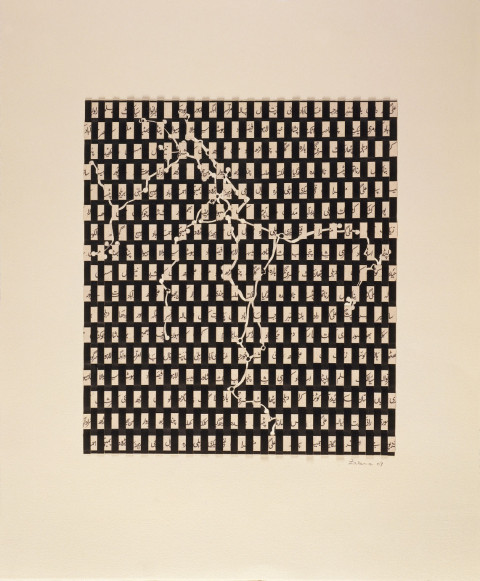
Zarina Hashimi
“Temporal lobe seizures also produce phenomena that while not strictly sensory are called experiential because of their alterations of consciousness. These include feelings of unreality, déjà vu, jamais vu (the feeling of never having seen something which is in fact familiar—a phenomenon perhaps linked to the freshness of perception that creative writers need), and the illusion of a presence only partly distinct from the patient or writer—whether of a doppelgänger, as Dostoevsky described in his novel The Double, or of the muse” ~ Alice Flaherty
Now graphomania is also associated with bi-polar conditions and with manic depressives. But there is also a huge number of manic depressive artists. A huge number of epileptic artists. The conclusion then must be that to break out of this state of numbed repetitive regression, the desired natural state of the public for those who control our society of domination, one must possess great will, or/and be vulnerable to physiological conditions that displace the normal state of walking sleep.
There are many factors in all this, and the topic of compassion looms as perhaps one of the most important. For it is mediated in so many ways. The social worker or caregiver is often caught in a paradoxical state of trying to balance competency with genuine concern. And competency is mediated by ideas of masculine stoicism. And on it goes.
*There is not less writing but there is certainly less good complex writing. With marketing and the internet the sheer volume of image and word is now almost limitless, but there is a nagging sense of most of this being a new post modern form of schizophrenic scribbling.
I end with an interview with Flaherty:
A DRAMA OF SOLITUDE by Marcel Broodthaers
My master will be back soon.
A sunbeam drove a patch of fresh snow under the logs of the door. The dog awaited the huntsman of ogres, a lonely party.
A bad season. Not a single skin to load on the sleigh. The magpie has been talking to the fox!
The door opened brutally, the dog said to him, “There you are, my dear master.”
The hunter shook out his fur collar.
Not a single shot fired, he grumbled.
Oh my master, how happy I am to see you again and to share with you these cans of bean stew. “Filthy beast,” he said, “You bring me bad luck.” He dragged him out to the front of the hut and killed him in one shot.
The huntsman of ogres looks out over the shifting horizon and murmurs:
“Moreover, I prefer to be alone in the Great North.”
***
“John Steppling is one of the world’s great writers and public intellectuals. His essays are brilliant and wide ranging, remnants of an intellectual period that is receding quickly in an age of tweets and the poison of neoliberal and celebrity culture. His insights are provocative, compassionate, and refuse the usual gated academic and disciplinary boundaries. He writes with a sense of civic courage that is as inspiring as his intellectual reach is wide. I am proud to call him a friend and comrade. ” ~ Henry A. Giroux
For more insights on politics and history go to: 21st Century Wire

















